Mushrooms are something very special and you are usually happy to see them on a walk. But if the mushrooms appear in the garden, the joy is often not quite as great.
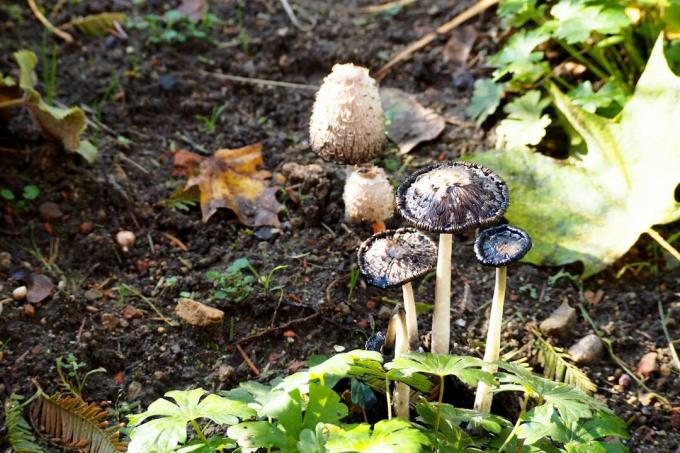
Not all mushrooms in the garden are a problem. Some are essential for the healthy life of trees, while others are harmful. We show how to deal with mushrooms in the garden and give a brief insight into common types of mushrooms in the garden. Here you can also find out which ones are edible, undesirable or even poisonous.
Contents
- Are mushrooms in the garden good or bad?
- Identify mushrooms in the garden
- Control and remove fungi in the garden
Are mushrooms in the garden good or bad?
Mushrooms in the garden are neither good nor bad. However, they usually occur when the conditions for garden plants are not optimal. Since they are accordingly indicators of problematic conditions in the garden, they are often regarded as a problem themselves.
Fungi often appear where there is a lot of shade, high soil moisture or even waterlogging and a lot of rotting organic material. A low pH value also favors the proliferation of fungi, since the bacteria in the soil are more likely to be inhibited. Cool temperatures also help the mushrooms to thrive. If all of these conditions occur at once in the garden, there is a good chance that mushrooms will sprout out of the ground or on wood. In a way, these factors favor each other and support the subterranean mycelium in the formation of fruiting bodies. These are then the mushrooms that we see above the ground.
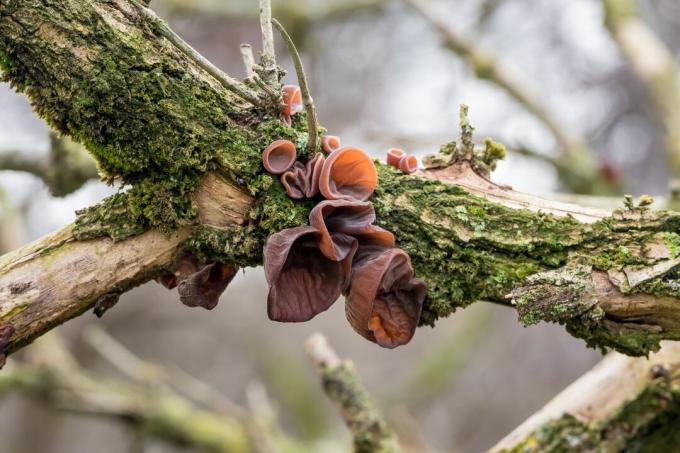
Since a lot of fungal spores are naturally found in the soil and on wood, it is quite normal for fungi to appear in the garden. Due to wood fiber in the substrate, it can also happen that they grow in purchased potting soil. Basically, mushrooms are fascinating creatures that can occur as tasty edible mushrooms or as deadly toadstools and fulfill important tasks in ecosystems.
The mushrooms themselves are not bad. They are even important for the decomposition of organic material or for the trees with which they form a symbiosis. However, because they often indicate sub-optimal soil conditions for many plants, fungi in the flower bed can be an indicator of problems in the garden. Some types of fungi, which form so-called witch rings, cause problems in the lawn - but most of them quickly disappear on their own.
At a Glance: What Promotes Fungi in the Garden?
- The shade
- High humidity
- Low temperatures
- Organic material such as wood or wood residues in or near the ground
- Low pH
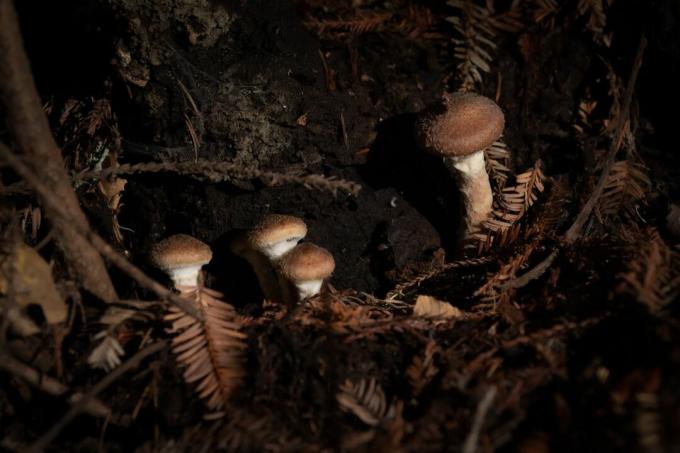
Identify mushrooms in the garden
Care should be taken when identifying mushrooms in the garden. If you want to identify edible mushrooms, it can happen that you accidentally catch a poisonous double. Since mushrooms are usually tied to certain habitats and even tree species, the growth location also helps when identifying the garden mushrooms.
For example, there are so-called saprobic fungi that are bound to dead, organic material. Since they don't depend on specific tree species, these come Mushrooms in the lawn freely before. You can read about which species are common in lawns in our special article.
Tip: A mushroom identification service is often offered in cities, where mushroom experts double-check your guesses.
Some mushrooms like the meadow mushroom (Agaricus campestris) can even be grown on artificial soil, while other fungi depend on the precise interplay of tree species and soil. Many of these species associate with the species of tree to which they are associated. The fungus envelops the plant root underground, which is referred to as mycorrhization. This means that fungus and tree benefit from each other's presence and an exchange of substances takes place. The fungal hyphae penetrate into the intercellular spaces of the tree roots and release nutrients to the tree. This in turn gives the fungus back energy-rich sugar compounds, which it obtains through photosynthesis. Since fungi have no chlorophyll, i.e. no green pigment, they are not capable of photosynthesis themselves. Some mushroom species only form a symbiosis with very specific tree species, which is why the location of the mushroom also provides information about the species.
- Grass green russula (Russula aeruginea): This fungus is usually found under or near birch trees. Sometimes it can also be found under spruce trees. Its hat is greenish or grayish and has a greasy shine. It belongs to the lamellar mushrooms and can be boiled or fried.
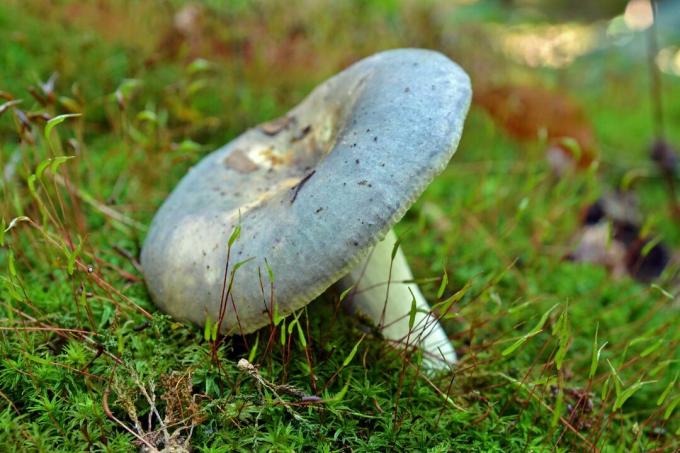
- Sparse squab (Pholiota squarrosa): This fungus is commonly found at the base of apple trees, but can also be found on other hardwood, dead or alive. The yellowish screen is covered with scales. The Sparrige Schuppling should not be consumed.
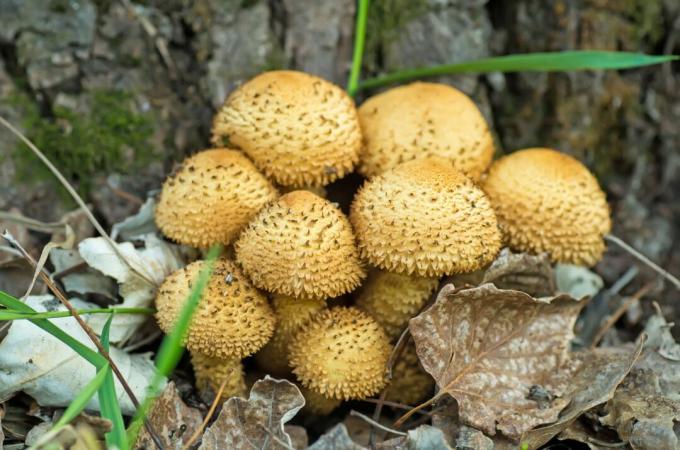
- Brick Red Crack Fungus (Inocybe erubescens): If you have linden or beech trees and calcareous soil and yellow mushrooms in your garden, you may be dealing with the brick red crack fungus. It then occurs not only near the trees, but also in the lawn. Its hat with the lamellae below is light yellow at first, but later turns ocher. It is one of the toadstools in the garden.
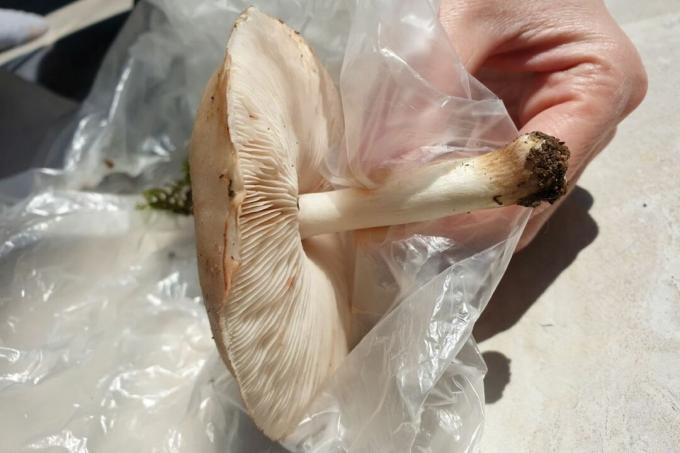
- toadstool (Amanita muscaria): The fly agaric is probably the most well-known mushroom and is easily recognizable by its red hat with white dots. It belongs to the lamellar fungi and consumption, especially in large quantities, can lead to symptoms of poisoning such as gastrointestinal problems and circulatory failure. It is often found under birch or spruce trees.
Control and remove fungi in the garden
Most mushrooms appear suddenly, more or less overnight, in the garden, but they also disappear quickly. It is therefore often not necessary to remove the fungi yourself. Basically, mushrooms are simply part of a functioning ecosystem. Mushrooms under trees are particularly important for the care of their partner plants and should not be removed.
However, if you have discovered poisonous mushrooms in the garden that pose a danger to pets or children, the fruiting bodies can be separated with a sharp knife and discarded. It is essential to wear gloves. This method only removes the fruiting body, but not the underground fungal network.
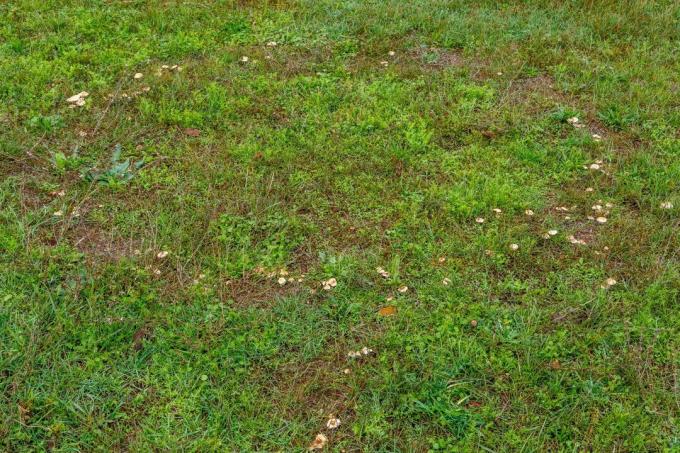
Since fungi are a sign of compaction and waterlogging, fungi in the garden are also indicators of soil conditions that most plants don't get. If you want to get rid of mushrooms in the garden, measures should therefore be taken to improve the soil conditions. At the same time, this prevents the fruiting bodies from growing. Suitable measures are, for example:
- If necessary, more light and higher temperatures can be guaranteed by cutting back large, shady plants.
- The soil in the flower bed can be aerated by raking and the lawn can be scarified to remove thatch. These measures help to ensure that water runs off better.
- Work in sand to make the subsoil more permeable.
- If the soil pH is very acidic, liming can help to make conditions unattractive to fungi and attractive to garden plants. It is best to use a moderately fast-acting lime like ours for this purpose Plantura Organic Lawn & Garden Lime. It is finely ground and its chemical form prevents the pH from rising too suddenly to protect garden plants and soil organisms.
- Dead and rotting wood can be removed.

Organic Lawn & Garden Lime 15 kg
- High-quality, fine-grained lawn & garden lime for improved soil fertility
- Against weeds and moss: Brings acidic soil back into balance
- Suitable for spreaders and easy to spread - harmless to pets and garden animals
Do mushrooms in the garden disappear by themselves? Based only on the fruiting bodies visible on the surface, mushrooms in the garden will disappear on their own if given a few days. The lifespan of the fruiting bodies is usually short. They grow quickly when the weather permits and disappear again quickly if they have not been eaten by animals first. However, the underground mycelium remains. This allows the fungi to reappear elsewhere or the following year.
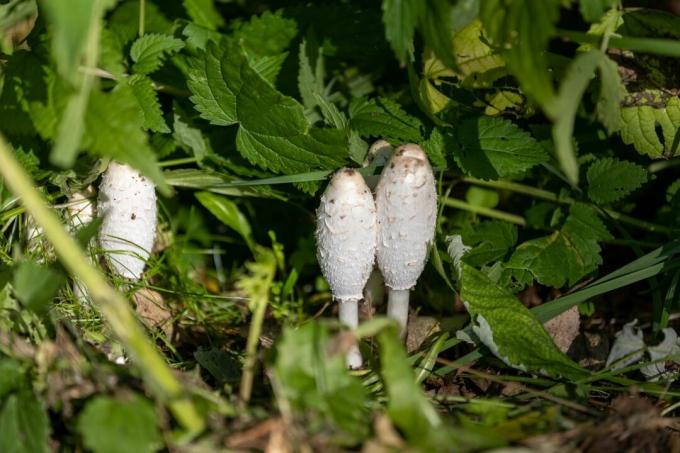
For edible mushrooms in the garden, the safest way is to grow the mushroom yourself. You can do this, for example Growing mushrooms on tree trunks. We show you how to do this in our special article.
Register now for the Garten-Post and receive great tips, seasonal trends and inspiration on everything to do with the garden from our expert every week.


